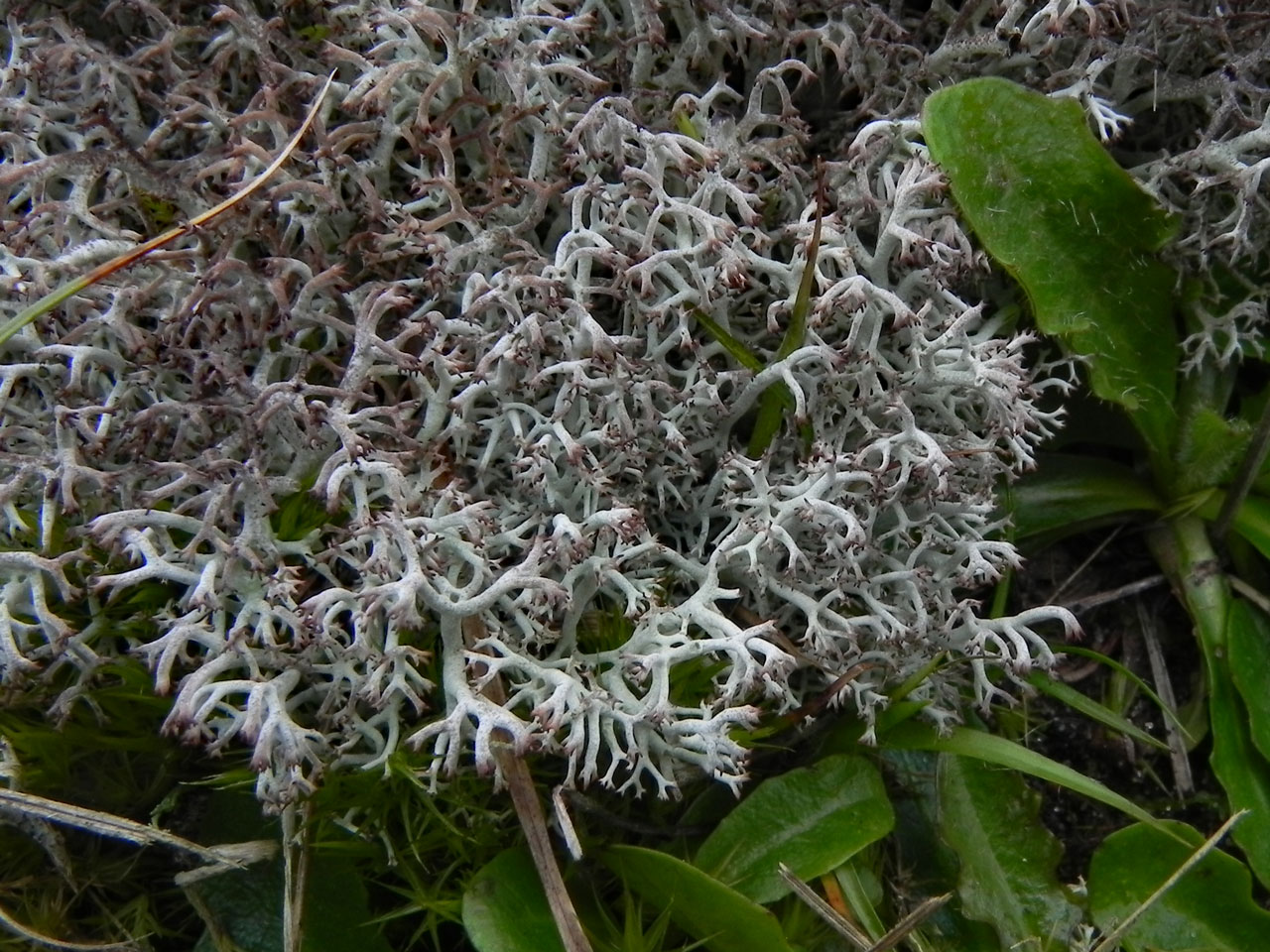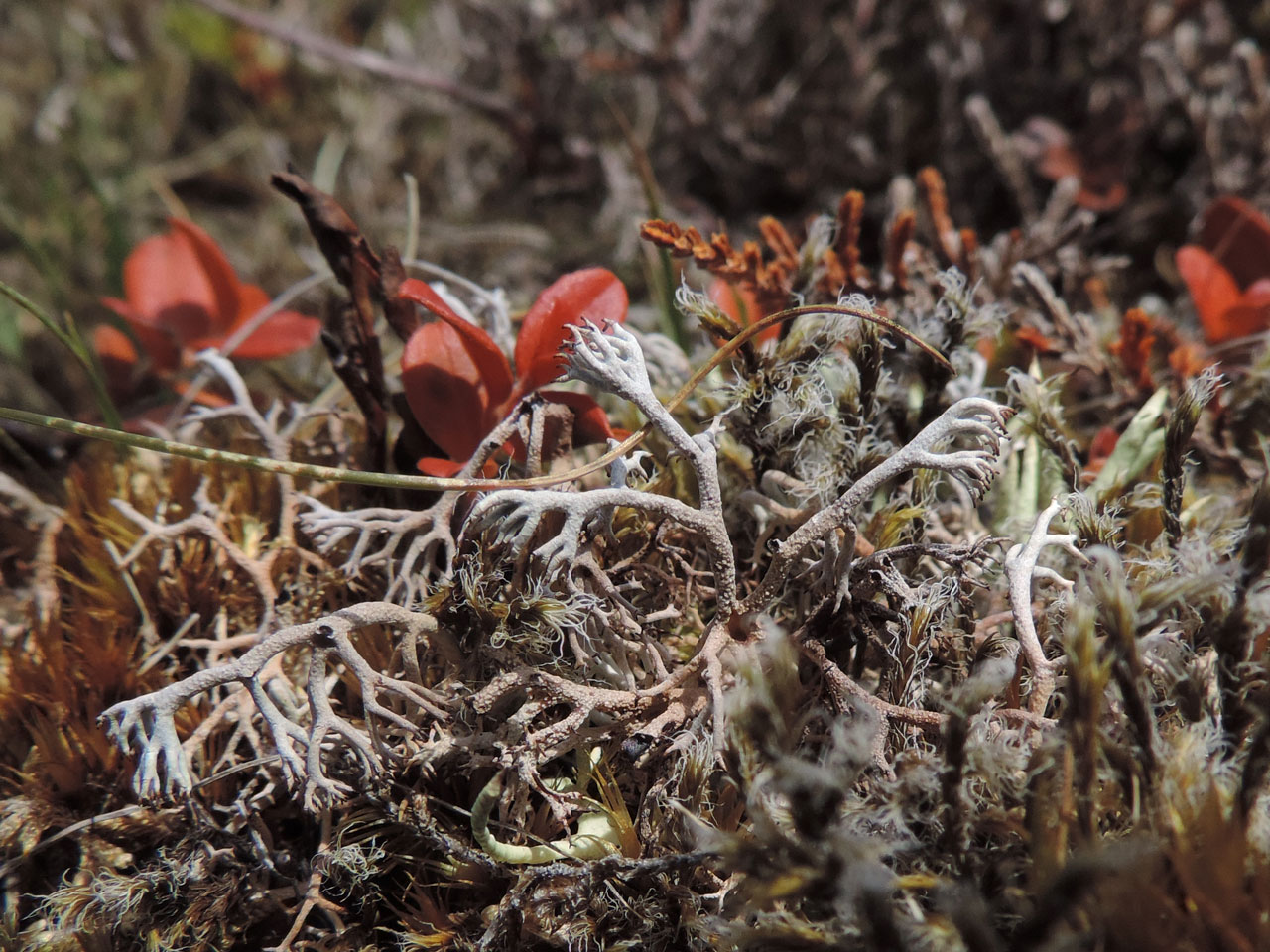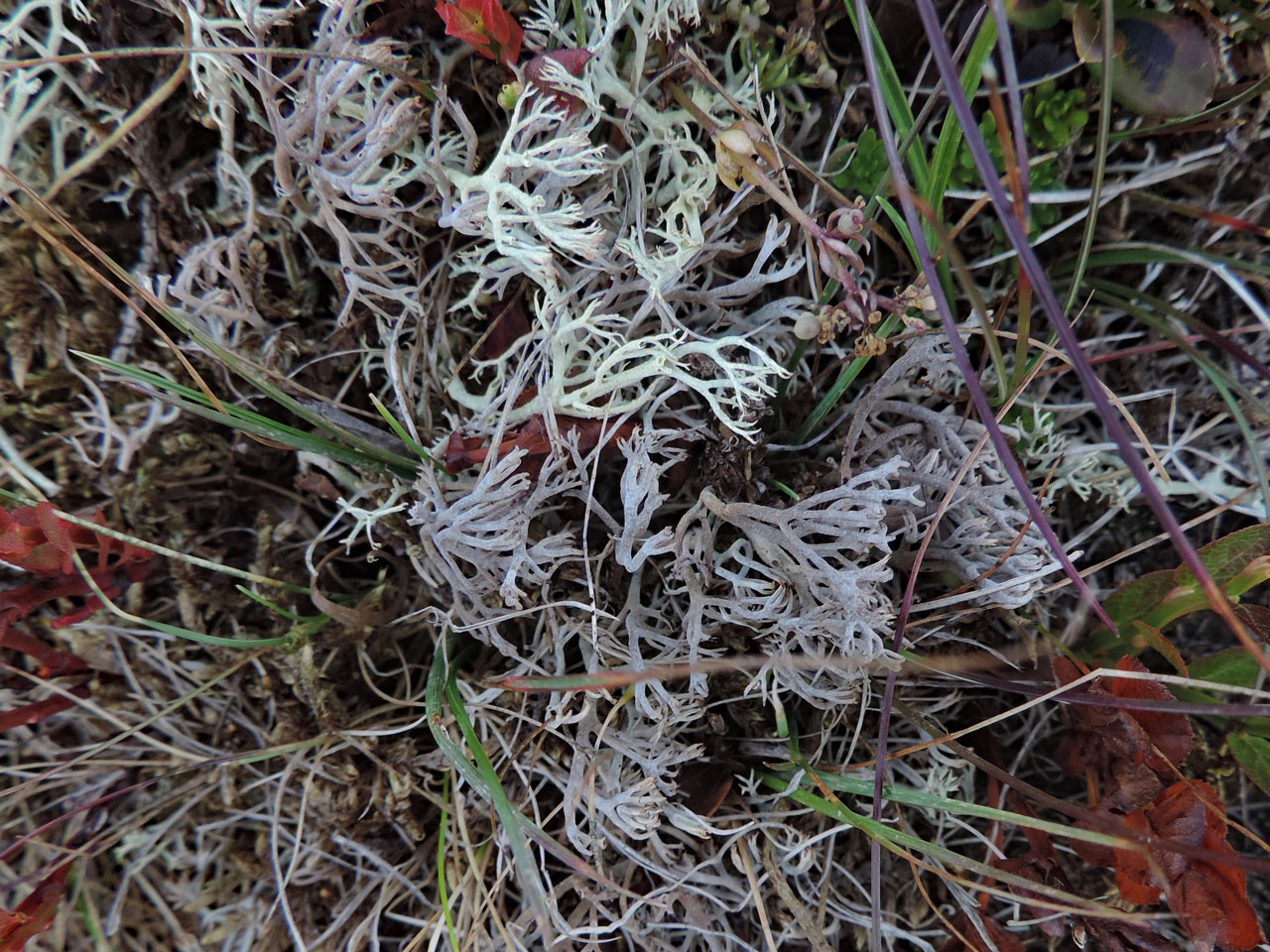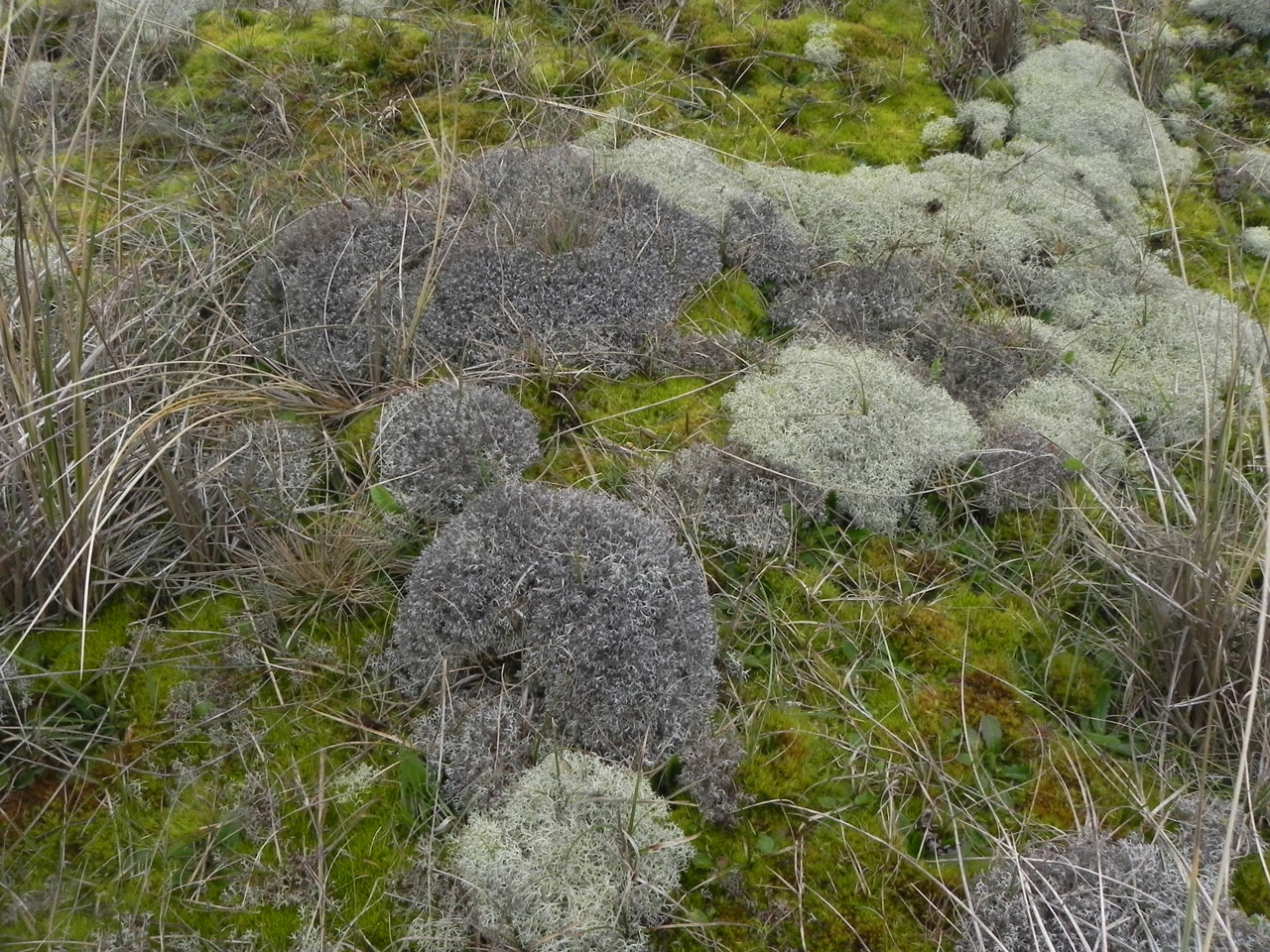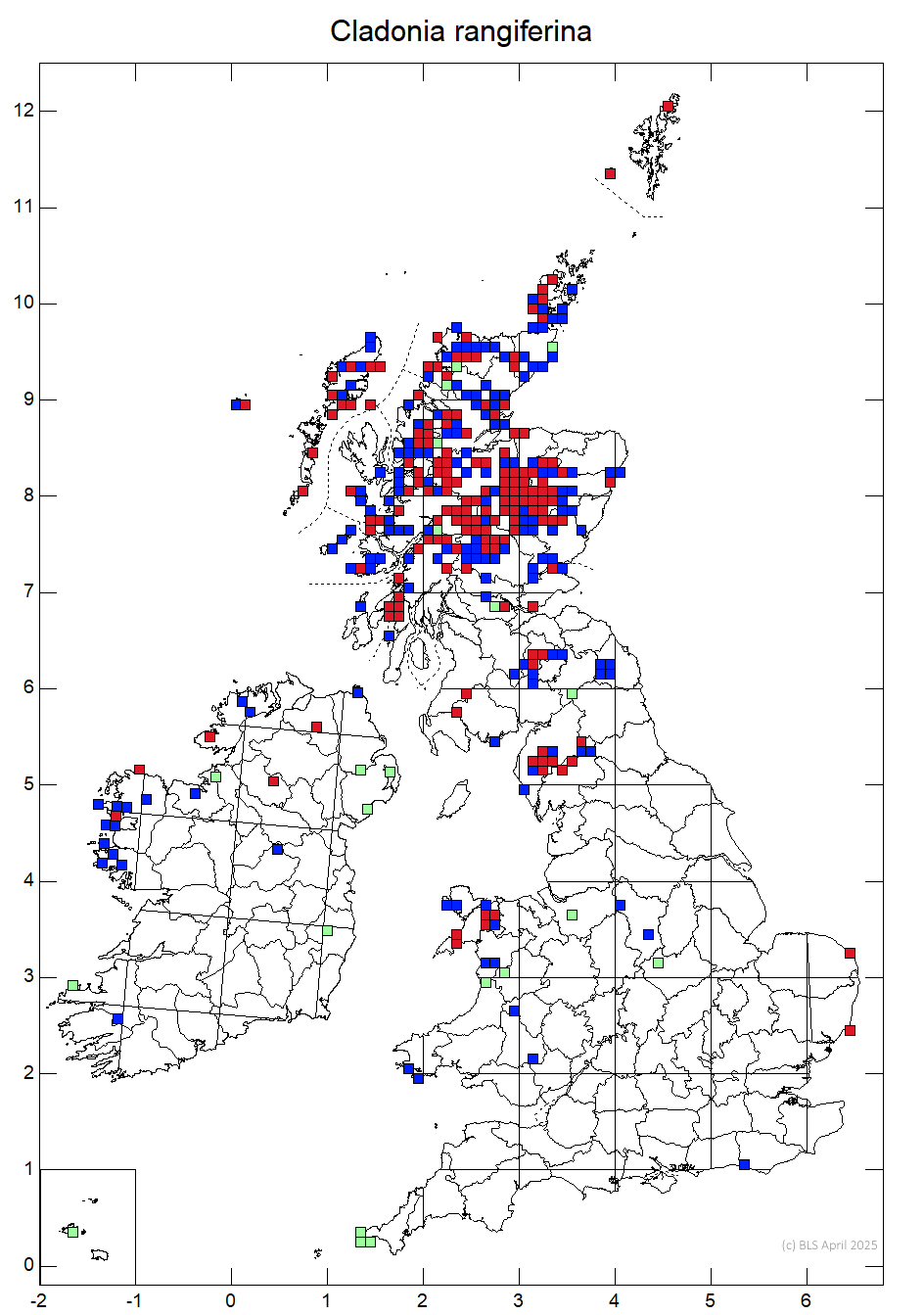A northern Reindeermoss, which is locally dominant in montane heaths and widespread below in moorland, acid woodlands, dunes and on shallow humus on rock. Threatened and declining to the south of its range by lands change. A large bulky lichen with recurved branches, resembling Cladonia arbuscula but the podetia has distinctive pale ash-grey and brown colours, a more visible felted cortex surface and a K+ yellow spot test (atranorin). The closely related C. stygia should be looked out for and may have been overlooked within larger C. rangiferina populations in the past.
Primary thallus crustose, evanescent. Podetia 4–10 cm tall, grey-white, the upper part often brown with a ± purple or bluish grey tinge towards the apices, the surface uniformly decorticate, finely cottony-arachnoid (×20 lens), richly branched, remaining pale grey towards the base; terminal branches recurved, distinctly orientated in one direction, the branching predominantly tetrachotomous, more rarely trichotomous at the apices; young apices blunt. Apothecia brown, inconspicuous, rare. Pycnidia containing colourless jelly. Thallus C–, K+ yellow, KC–, Pd+ red, UV– (fumarprotocetraric acid, atranorin).
Characterised by the even, cottony-arachnoid surface (×20 lens), white (not yellow-green) colour of the podetia, tetrachotomous branching and the presence of atranorin (K+ pale yellow). Cladonia ciliata differs in the roughened, not cottony, surface, thinner branches, dichotomous branching and pycnidia containing red jelly. C. arbuscula and many populations of C. ciliata are yellowish green due to the presence of usnic acid. C. stygia is very similar but has a notably blackened surface towards the base with stark, scattered, white areoles and is browner towards the tips of the branches; its pycnidial jelly is red.
Locally dominant in montane heaths in both exposed windblown Heather heaths and in Bilberry heath in moderate duration snow patches. Also lower down in moorlands, dunes, acid woodlands (especially pinewoods) and in pockets of soil on cliff ledges and rock outcrops in montane to coastal areas; widespread but rather local. To the south threatened by habitat loss, especially from past over use of montane heaths.

N. England, N. Wales, Scotland, Ireland; rare and apparently declining south of the Highlands, very rare in lowland England.
Has under gone a long term decline decline south of the Highlands, from habitat loss and with over intensive management of montane heaths a threat.
Wales: Near Threatened
Pino-Bodas, R., Sanderson, N., Cannon, P., Aptroot, A., Coppins, B., Orange, A. & Simkin, J. (2021). Lecanorales: Cladoniaceae, including the genera Cladonia, Pilophorus and Pycnothelia. Revisions of British and Irish Lichens 19: 1-45. Link
Text by Neil A Sanderson based on Pino-Bodas et al (2021)
